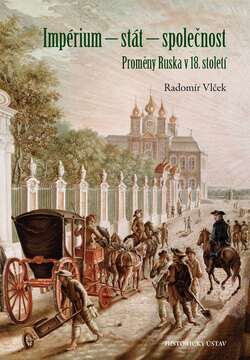Empire – State – Society. Transformations of Russia in the 18th century
 Year of publication:
2021
Year of publication:
2021
 Publisher:
Historický ústav
Publisher:
Historický ústav
 ISBN:
978-80-7286-368-6
ISBN:
978-80-7286-368-6

The subject of the monograph is an interpretation of 18th-century Russia in a political and cultural historical context. The emphasis is on traditions, symbols and stereotypes. Russia is described as a geopolitical entity, following Moscow's Caesaropapeist state, but with a centre in St. Petersburg. Its construction has become one of a number of modernization, but in the daily life of society, few of the manifest steps that Russia, as an empire, has taken closer to more advanced countries. Especially in the sense of power and military. Following the tradition of the Moscow state, not only was the almighty Tsar responsible. His word was the law. Although Russia's 18th century was accompanied by secularization, faith, especially one based on Christian orthodoxy, was a pillar of everyday life. Not the Church. It became a state-based institution. The tsar and his state were decisive in everything. In the popular stereotype, the Tsar prayed for everything and everyone, he was alert to everything and protect the inhabitants of the state. He was the only one who knew best what was good for them. If this was not ideal at the moment, then it should have happened sometime in the future. In short, Russia has been on the way to a better tomorrow. At least in visions. The eighteenth century turned Russia into a pyramidal bureaucratic state that fulfilled the Tsar's decisions and wishes. Traditions and stereotypes persisted. But Russia has undergone positive changes, such as in science, art, and education. But even more changes were being prepared to fit in as a result of the unwillingness to change habits. Society's life remained rigid. Russia as a state has modernized, but social, economic, legal, and other scissors between privileged individuals and broad classes have opened up significantly in society. Much of it stemmed from the past. Last but not least, the monograph also reflects on why many things survived to modern times.


